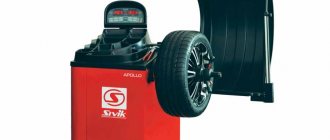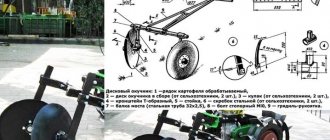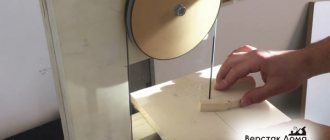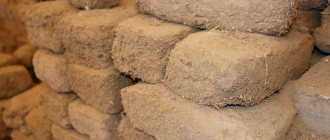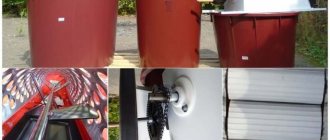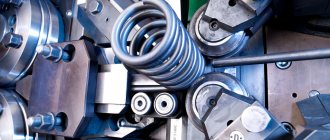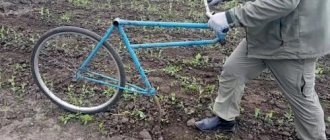In most cases, before buying a walk-behind tractor, people pay special attention to the practical characteristics of the device, without being interested in the quality and features of the wheels. This approach can hardly be called competent, because the quality and duration of operation of the equipment itself depend on these details.
Since this unit is a multifunctional device, different wheels for the walk-behind tractor are offered:
- pneumatic;
- traction wheels;
- solid rubber versions;
- metal wheels with lugs.
In order to clearly understand the specifics of each type, you should consider their features in more detail.
Options for wheel design drawings for a walk-behind tractor
Factory configurations of wheels for a motor cultivator are classified according to the number of axles, as well as the principle of traction. Manufacturers produce home mini tractors, the design of which involves the movement of the unit due to:
- two wheelsets;
- paired wheel structure on one axle;
- one drive wheel;
- on three wheels.
Single-wheel mechanisms are often equipped with additional devices on the axle, which also serve as support for the structure. Analyze the model of your home cultivator to improve its functionality. Choose a durable, reliable material or a suitable base for making homemade chassis elements.
Four wheel option
Small-sized agricultural tractors on four wheels are a miniature of a similar vehicle without a cabin. The configuration of the models allows the user to move on a walk-behind tractor.
To improve the factory configuration, you can replace only the drive pair or change all the disks. Choose one of the options to improve the performance of home agricultural equipment:
- equipping factory tires with additional protectors;
- putting new tires with a textured pattern on the wheels;
- installation of wheelsets of different radii on the axles - larger ones under the mechanisms, smaller ones under the driven part;
- installation of car wheels.
Important!
Designing wheels is an important stage in improving a walk-behind tractor, at which it is necessary to make accurate calculations of the optimal dimensions, arrangement of elements, and locations for drilling fasteners.
Four-wheeled walk-behind tractors are classified as heavy-duty models. A number of machines are configured with non-removable wheel elements. Before modifying a mini tractor, make a drawing according to which you plan to improve.
On one wheel set
Two-wheeled motor cultivators are equipped with one axle with a pair of wheel elements. The platform with the installed engine is controlled by the user using handles. Installing a passable wheelset will solve the problem with:
- slippage;
- slippage;
- filling the poorly expressed tread pattern with earth;
- poor handling;
- insufficient plowing depth, etc.
Draw a sketch of one element on paper yourself or make a drawing in a computer program. In the figure, indicate the diameter of the disk, the location of the holes for the axle, fastenings, and their dimensions.
With one driving wheel
Single-wheeled cultivators are devices in the form of a wheel element in a tire with a pronounced tread. The speed of work and efficiency when performing farming work depend on the permeability of the disk.
When preparing a drawing for replacing the drive wheel, use the following recommendations:
- select the diameter of the wheel element similar to the factory configuration;
- choose materials with greater weight when making a wheel yourself;
- replace the rubber with a more textured and wider one.
The walk-behind tractor on one wheel is controlled by manual manipulation. It will be easier for you to drive a design with a wide wheel and a powerful tread.
Three-wheeled models
On small-sized agricultural tractors for cultivating a summer cottage with three wheels, the front element performs the function of following a given trajectory. The rear wheel pair is supplied with torque from the unit engine. In most models, the chassis located at the front is made of a larger diameter.
To design the replacement of wheels on a single-axle small-sized tractor, use the following recommendations:
- calculate the same radius of the wheel and tire that is provided in the factory configuration. Installing a smaller or larger wheel in diameter will make the mechanisms work incorrectly;
- make identical wheel elements. Replacing wheels with different tread patterns or different weights will complicate the use of the mini tractor.
When making a drawing with your own hands, take as a basis the model designed by the manufacturer. Consider the full radius of the elements. You can design a disc with a smaller diameter, but install thick tires on it, and vice versa.
Ultra-low pressure tires - the car will go anywhere!
Cars on large wheels are increasingly appearing on domestic roads these days. They are used on huge low-pressure tires on both factory-made vehicles (for example, all-terrain vehicles) and homemade ones. In most cases, SNDs for them are manufactured to special order, which, naturally, requires significant financial costs.
If you wish, you can save money and try to make low-pressure tires with your own hands. We will talk about the process of making them yourself below, providing a video of this operation. Now let’s describe the main advantage of SND. It lies in the fact that the low specific pressure on the ground (road) of such SUV tires allows you to create real all-terrain vehicles from ordinary cars that are not afraid of driving over rough terrain.
Low pressure tires
Cars with ultra-low pressure tires can easily overcome any off-road conditions and swamps; they can be used on country roads and agricultural land.
It has been proven that the cross-country ability of vehicles equipped with low-pressure tires is 20–40 percent higher than the cross-country ability of similar cars with standard tires.
In addition, the described tires (both homemade and made in production conditions on a special order) are characterized by a high rate of contact with the road. Due to this, when the tire hits any obstacle on the ground, it takes on its shape - “envelops” it, thereby increasing the area of contact of the low-pressure motor with the obstacle, which makes it possible to drive through it without difficulty.
Contact of the low-pressure motor with an obstacle
Please note that cars with ultra-low pressure tires require special skills from the driver of the vehicle. Driving such a car is more difficult than a car with ordinary passenger tires. It is very important to corner as smoothly as possible to avoid damaging the sidewalls of the tires.
Types of wheels for farm walk-behind tractors
For home appliances for cultivating a summer cottage, different chassis configurations are provided. It depends on the type of work performed and the conditions of use of the minitrautor. Manufacturers install wheeled structures on walk-behind tractors, which are distinguished by shape, material, and weight.
Most factory motor cultivators quickly wear out rubber during operation, deform wheels, and are light in weight. Plowing the field, removing snow, mowing grass, planting and harvesting vegetables can be done with a low level of quality.
Traction wheels
The wheel elements that perform the function of moving the working farm mechanism are called traction. The standard factory equipment includes tires with a herringbone pattern on wheels of this type. The use of a walk-behind tractor with such protectors is advisable on loose soils, for transporting goods around the site, and for mowing grass.
If the result is unsatisfactory, the wheels may need to be replaced. Choose one of the options:
- install homemade, heavier and wider elements;
- replace tires on factory wheels;
- install car rims and tires;
- place weights;
- attach lugs that improve traction with the ground.
Narrow factory traction wheel designs make the use of a motor cultivator inconvenient, and the farming activities carried out are of poor quality.
Pneumatic wheels for walk-behind tractor
Wheel structures with pneumatic tires are metal disks on which rubber tubes with compressed air are attached inside. The elastic rim tape absorbs shaking when moving over uneven surfaces and transmits traction force. Working on a walk-behind tractor with a pneumatic chassis is characterized by convenience, high speed and decent quality.
The tires on the wheel system are made of a sealed rubber pipe, which is equipped with a valve and a check valve. Rubber, smaller in size than the diameter of the disc, is inflated with compressed air and ensures a tight seal. Throughout the entire circumference, the width of the tire rim has an equal size, no less than 20 cm. Elements with a radius of 20 cm and a pronounced tread pattern are installed on motor cultivators. Pneumatic wheels are characterized by:
- high wear resistance;
- good grip on the ground;
- service life of at least 5-7 seasons.
Important!
Install wheel tires with a rough, large pattern to prevent the cavities from becoming clogged with soil, slipping, and improve the maneuverability of the mini tractor.
With regular use of a motor cultivator with pneumatic wheels, the chassis wears out after 3-4 years. After the tires wear out, the element requires replacement - installing a new wheel structure or installing new rubber.
Metal wheels
For difficult terrain conditions and clayey soils, mini-equipment on a metal wheeled structure is used. Manufacturers offer different model options for plowing, hilling, and transporting goods:
- metal disc wheels;
- lugs are metal structures in the form of a rim and teeth.
Wheel elements made of steel or cast iron alloy make the equipment heavier, which ensures better performance of the unit. The lugs provide good traction with the ground, due to which the minitractor quickly moves along the ground, the soil does not clog the rim, and slipping is eliminated due to the deep immersion of the teeth in the soil.
Wheels from a Zhiguli car on a walk-behind tractor
Before installing car wheels, analyze the terrain, type of soil at your summer cottage, and type of work. If clay substrates predominate, use studded wheel elements. For uneven and rocky areas, choose tires with a textured large tread pattern.
For most models of small-sized garden tractors, any wheels from a Zhiguli car are an excellent replacement. Use the recommendations when replacing factory wheels on a walk-behind tractor:
- prepare replacement blanks;
- Weld a metal plate onto the inner surface of the disk, which will act as a hub;
- drill holes in it for fastening;
- weld a thick-walled pipe to the plate;
- drill holes in the tube for the fixing cotter pin;
- place the manufactured axle shaft with the wheel on the walk-behind tractor;
- secure with a cotter pin;
- repeat the steps for other similar elements.
For comfortable work on any type of soil, use winter tires. To make the unit heavier, weld thick metal elements to the hub plates.
How to choose and install wheels for a cultivator?
- Types of wheels for motor cultivators. How to choose them?
- How to make and install wheels on a cultivator?
- Additional designs
The cultivator is the “main assistant” for farmers and amateur gardeners on plots of land. The maneuverability and maneuverability of the unit directly depends on the quality and correct installation of the wheels. Selecting and changing transport elements on the cultivator is not difficult. The main thing is to take into account the characteristics of their types.
Making weights with your own hands
Installing weights on the wheels will help solve the problem of shallow plowing depth, hilling or slipping of the unit on clay soils. Brake pad parts are used as weighting elements.
Weight your walk-behind tractor according to the following scheme:
- clean the brake discs from rust;
- screw the weights to the hub plates through the factory holes;
- tighten the fasteners.
If necessary, remove and install homemade weights when performing various farming activities. Another option for making small farm equipment heavier is to weld plates made of thick sheet steel or cast iron to the wheels.
Self-production
In order to make lugs for the walk-behind tractor, you first need to find drawings that will serve as a guide during the work process. The easiest way is to make homemade lugs from car rims. Using a welding machine, a metal strip is attached to them, on which the grouser plates are subsequently attached.
Next, in order to make lugs, it is necessary to make teeth, for which a steel plate of sufficient thickness is used. The length of the teeth is selected depending on the model of the walk-behind tractor, and they are attached along the rim in increments of 15-17 cm. Such lugs for walk-behind tractors do an excellent job of their functions and, if manufactured well, do not disappoint their owners.
Another way to make your own lugs for a walk-behind tractor is to use a used gas cylinder. In this case, it is necessary to cut two disks from it, which will become rims, the width of which should be from 6 to 10 cm. Their height will be 30cm. Next, just like in the case of car wheels, a metal plate is installed on them, to which the teeth are mounted. Their length should not be less than 15cm. If necessary, you can increase it at your discretion, but the main thing is not to overdo it.
Selection of tires for wheels
If the factory tires wear out on the wheels of a small-sized tractor at the dacha, replace the tires. Before choosing tires, determine the tasks you will perform with the walk-behind tractor. For plowing and collecting tubers, choose wide tires with a radius of at least 20 cm and the same width.
For motor cultivators and trailers, 4-10 inch models with spikes are a universal option. Studded tires do not slip on clay and have good grip on the ground. Select tires based on the factory parameters of the vehicle. Do not exceed the diameter specified by the manufacturer. The aggressive tread pattern eliminates the problem of clogging the tire cavities. For domestic walk-behind tractors Zubr, Aurora, Centaur, Dobrynya, and foreign cultivators ZIRKA, it is possible to install chamber wheel structures of 5-12 inches.
